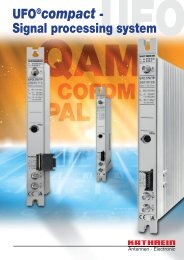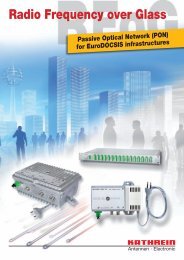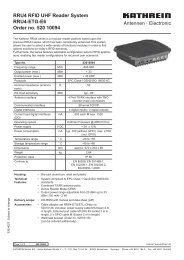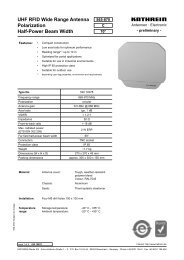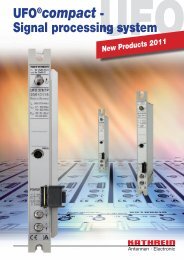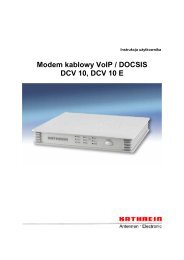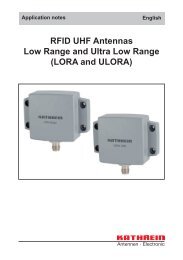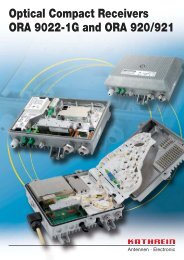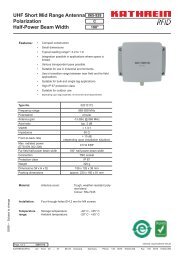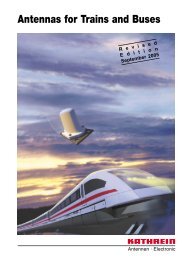Basic Antenna Principles for Mobile Communications
Basic Antenna Principles for Mobile Communications
Basic Antenna Principles for Mobile Communications
You also want an ePaper? Increase the reach of your titles
YUMPU automatically turns print PDFs into web optimized ePapers that Google loves.
7. <strong>Antenna</strong>s <strong>for</strong> Portables<br />
The antenna is increasingly becoming an integral part of the handheld unit especially in communication<br />
services at higher frequencies such as GSM and DCS 1800. This has the advantage that the impedance<br />
at the interface is no longer critical (50 W impedance at the connector).<br />
Handheld equipment is available on the market with extendable antennas. These fulfill the criterion of<br />
λ/4 antennas if not extended (the handheld mobile must always be available). These antennas reach<br />
an electrical length of λ/2 if extended resulting in the required gain <strong>for</strong> mobile transmitting operation.<br />
7.1 λ/4 <strong>Antenna</strong>s<br />
An electrical counterweight is required similar to the situation described <strong>for</strong> vehicle antennas <strong>for</strong> portable<br />
antennas, this counterweight is per<strong>for</strong>med by the housing of the radio. The user of the mobile<br />
distorts the antenna - counterweight system because he carries it within its own radiation field. The per<strong>for</strong>mance<br />
of the antenna may vary strongly depending on the user and his habits.<br />
Electrical interference of the mobile itself is possible, because the mobile is part of the antenna. The<br />
very simple construction of this antenna is its main advantage. A sufficient electrical compensation <strong>for</strong><br />
50 W is achieved without special measures. The antenna itself is a lengthened inner conductor of a<br />
coaxial cable.<br />
.<br />
7.2 λ/2 Antennes (Gainflex)<br />
If the antenna has a length of λ/2 than no electrical counterweight is needed. The antenna functions<br />
independantly of the mobile and one there<strong>for</strong>e speaks of a decoupled antenna. The resulting advantages<br />
are as follows:<br />
– practically insensitive of handling/operating position.<br />
– a defined radiation charactistic and the thereby practical gain of approximately 4 dB with<br />
reference to a λ/4 antenna.<br />
– interference of the mobiles electronics is avoided via the decoupling of the antenna from the<br />
mobile.<br />
The impedance at the base of this antenna is very high. There<strong>for</strong>e a relatively complicated matching<br />
circuit at the base of the antenna is needed to compensate the impedance to 50 W.<br />
– 17 –



